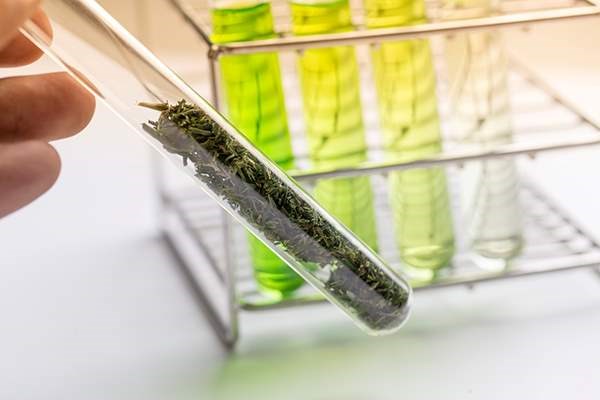The CDC is tracking reports of poisonings caused by brodifacoum-laced synthetic marijuana (aka "spice").
Between March and April 2018, several cases of unexplained bleeding with INRs ranging from 5-20 were reported to the Illinois Poison Center from local EDs. This led to a full investigation by the CDC. The link between these patients seemed to be recent reported use of synthetic cannabinoids thought to be laced with brodifacoum, a long-acting vitamin K antagonist similar to warfarin that has been used as a rodenticide for decades.1,2 The association was later confirmed by testing blood samples and the synthetic cannabinoid products they used. Lacing synthetic marijuana with brodifacoum may have been intentional for euphoric purposes,3 or possibly not intended for consumption if the plant material was sprayed during growth to prevent crop damage. The CDC uncovered additional reports through other parts of the Midwest and Northeast, with Illinois remaining the highest area affected, at 164 cases and 4 deaths (and counting).4
Though brodifacoum exposure and its lethality is not new, the route by which patients were exposed in this case was unique. The most common route of brodifacoum exposure is ingestion, but it can be readily absorbed through the skin and via inhalation. Significant vapor exposure is unlikely during the handling of either solid or liquid brodifacoum for its intended use as a rodenticide. However, as evident with this new outbreak and prior case reports, there is a great deal of absorption potential through the respiratory tract.5,6
How Bad is Brodifacoum?
In contrast to warfarin, which has a half-life of 35 hours, brodifacoum possesses an exceptionally long half- life up to 90 days in the serum.3,7 In addition, it delivers a 100-fold increase in potency, which has led many to call it a “superwarfarin.”5,7
What Are the Clinical Effects?
Delayed and prolonged bleeding are common. The effects of brodifacoum may take several days to appear and can last several months. Therefore, patients who may have already sobered from the synthetic cannabinoid will present with hematemesis, epistaxis, bleeding gums, hematuria, hematochezia, or unexplained ecchymosis. More concerning are the possible atraumatic findings, such as spontaneous cerebral, thoracic, or abdominal hemorrhage.
How Can I Diagnose This?
Unfortunately, brodifacoum-specific testing is not readily available at most hospitals and will likely take several days. Getting a set of coags (PTT, PT, INR) can help indirectly diagnose coagulopathy and should be trended at least daily to monitor the efficacy of treatment.7 High INR levels in the absence of chronic anticoagulant use history should be highly suspicious for other sources of acute anticoagulation, such as brodifacoum.
What Is the Treatment?
For oral ingestions of brodifacoum, activated charcoal theoretically may be useful if given early. However, it would have little to no benefit with inhalational exposure. Acute treatment generally follows the standard of care for warfarin toxicity with prothrombin complex concentrate, fresh frozen plasma, and vitamin K1. The main difference in treatment for brodifacoum is the much greater doses of vitamin K required (up to 400 mg IV initially, and 50-200 mg PO daily).7 Given the long half-life of brodifacoum, long-term (weeks to months) doses of vitamin K will be necessary.7 Consult your local poison control center and medical toxicologist for individualized patient diagnostic testing and management. (National hotline is 1-800-222-1222.)
Take-Home Points
- Maintain a high level of suspicion. Many of these patients will present to the ED days after synthetic cannabinoid use and will have non-specific chief complaints. It is imperative to maintain a high level of suspicion, especially in the Midwest states where many cases have already been identified. In the standard HPI of any of the above chief complaints, it would help to elicit a “history of synthetic cannabinoid use.” Lab results may be normal for the first 24.48 hrs after exposure, but INR may return > 5 or even above the level of detection.
- In future pre-surgical and pre-procedural patients, consider obtaining history of synthetic cannabinoid use. Given this recent outbreak, there may be a greater unidentified risk of bleeding in patients with impending ED procedures or surgical emergencies. Additionally, advise patients to abstain from synthetic cannabinoid use because of their inherent dangers and the risk of contamination with an anticoagulant.
- Collaborate with your local poison control center. ED clinicians are often the first to experience and recognize a potential outbreak or epidemic. Consulting the local poison control center is vital because it allows for monitoring the incidence and prevalence of exposures. It also helps clinicians individualize the treatment of their patients.
Acknowledgment: We would like to thank Steven Aks, DO, FACEP, Director of Medical Toxicology for the Cook County Health and Hospitals System, for his expertise and guidance.
References
1. Moritz E, Austin C, Wahl M, et al. Outbreak of severe illness linked to the vitamin K antagonist brodifacoum and use of synthetic cannabinoids— Illinois March-April 2018. MMWR. 2018;67(21):607-608.
2. CDC Clinician Outreach and Communication Activity. Outbreak alert: Potential life-threatening vitamin K-dependent antagonist coagulopathy associated with synthetic cannabinoids use. Atlanta, GA: US Department of Health and Human Services, CDC; 2018.
3. Feinstein D, Brodsky S, Weinberg G, et al. Brodifacoum poisoning: A clear and present danger to public health in the USA. Toxicol Lett. 2017;268:71-72.
4. Illinois Department of Public Health. Synthetic cannabinoids linked to bleeding. 2018.
5. Booth G, Mody P. Brodifacoum inhalation and its clinical manifestations in a 21-year-old Caucasian man. Lab Med. 2016;47(1):63-6.
6. La Rosa F, Clarke S, Lefkowitz J. Brodifacoum intoxication with marijuana smoking. Arch Pathol Lab Med. 1997;121(1):67-9.
7. Hoffman RS, Howland M, Lewin NA, Nelson LS, Goldfrank LR. eds. Goldfrank's Toxicologic Emergencies, 10e New York, NY: McGraw-Hill; 2015.



